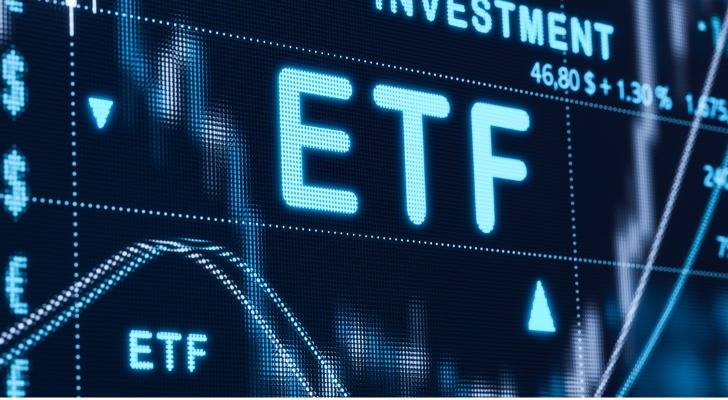Exchange-traded products (ETPs) are investment vehicles traded on major stock exchanges, offering investors exposure to a diverse range of assets without directly owning them. While exchange-traded funds (ETFs) are the most common variety of ETP, they aren’t the only kind. Exchange-traded commodities (ETCs) invest in precious metals and other resources, while exchange-traded notes (ETNs) are unsecured debt securities with performance linked to a market index. A financial advisor can help you determine whether ETPs belong in your investment portfolio.
About Exchange-Traded Products (ETPs)
Exchange-traded products (ETPs) offer a dynamic way for investors to access various asset classes through stock exchanges, functioning similarly to individual stocks. Within the ETP family, there are distinct instruments tailored to different investment strategies.
ETFs, for example, are designed to mirror the performance of specific indices or sectors, facilitating investment in a particular market segment. On the other hand, ETNs are unsecured debt securities that promise to pay a return linked to a market index or other benchmark, minus fees. Specialized ETPs also exist which provide exposure to commodities and currencies, enabling investors to tap into markets that may have been otherwise inaccessible.
Incorporating ETPs into an investment portfolio can offer a level of diversification that might be challenging to achieve through individual asset purchases. For example, if an investor aims to spread their risk across various sectors without the complexity of selecting and managing numerous stocks, choosing an ETF that tracks a broad market index could help them do so in a single transaction.
Buying and selling ETPs occurs via a brokerage account during standard market hours, allowing for real-time trading. As a result, prices fluctuate based on market supply and demand. However, it’s important to note that while ETPs are designed to provide real-time pricing, this can be affected by various market factors.
ETPs vs. Mutual Funds
ETPs and mutual funds represent two mainstays of the investment world, each offering distinctive advantages and catering to different investor needs. Mutual funds are professionally managed investment funds that pool money from multiple investors to purchase a diversified portfolio of securities.
The primary differences between ETPs and mutual funds lie in their trading mechanics and pricing structures. ETPs are bought and sold on stock exchanges, which means their prices can fluctuate from moment to moment during the trading hours, reflecting immediate market conditions and investor sentiment. This dynamic pricing allows investors to execute trades at market prices throughout the day, offering the opportunity to implement diverse trading strategies, such as hedging or market timing, to capitalize on intraday market movements.
In contrast, mutual funds are priced according to their net asset value (NAV), which is computed once after the market closes each day. The NAV is simply the total value of all assets in a fund, less any liabilities, divided by the total number of outstanding shares. This end-of-day pricing means investors receive the same price regardless of the time they initiate a trade during the trading day.
While this may not suit those looking to exploit short-term market fluctuations, mutual funds often provide the convenience of automatic dividend reinvestment and systematic investment plans, which can offer consistent portfolio expansion and compounding growth over time.
Types of ETPs

ETPs have expanded the toolkit available to both retail and institutional investors, accommodating a wide array of investment strategies and risk tolerances. As a cornerstone of modern investing, ETPs enable portfolio diversification, a key tactic for managing risk. But what are the various types of ETPs, and how can they fit into your investment portfolio? Here’s a look at the three primary varieties, ETFs, ETNs and ETCs:
Exchange-Traded Funds (ETFs)
ETFs are investment funds designed to mirror the performance of stock market indices and sectors. A unique aspect of ETFs is their creation and redemption mechanism involving authorized participants—major financial firms that work with ETF issuers to ensure liquidity and fair pricing.
ETFs are often praised for their tax efficiency. Unlike mutual funds, which may trigger taxable events due to frequent buying and selling of securities within the fund, ETFs typically have lower turnover rates. This means fewer capital gains distributions, reducing the tax burden on investors.
These participants can create new ETF shares by delivering the required assets to the fund, or redeem ETF shares for the assets, thus keeping the ETF’s market price in line with its net asset value. This process benefits investors by providing continuous liquidity and price transparency.
The ETF landscape is rich and varied. Equity ETFs allow for investment in specific indexes or sectors, offering a way to participate in a diversified stock portfolio through one transaction. Bond ETFs provide a window into an array of fixed-income securities with different yields and maturities.
In January 2024, the Securities and Exchange Commission (SEC) approved Bitcoin ETFs, marking a significant moment for digital asset investment. This development has facilitated exposure to Bitcoin, reflecting a broader acceptance of cryptocurrencies by the investment community.
Exchange-Traded Notes (ETNs)
Exchange-traded notes or ETNs are unsecured debt securities issued by banks, promising to pay the return of a specific index or strategy. Unlike ETFs, which hold actual assets, ETNs are more like IOUs from the institution, carrying the risk associated with the issuer’s creditworthiness.
The key difference between ETFs and ETNs lies in their underlying structures and associated risks. While ETFs are subject to the market risk of their assets, ETNs carry the credit risk of their issuer, a potentially significant factor if the issuer faces financial difficulties. This risk could lead to losses for ETN investors, regardless of the index’s performance.
Despite this risk, ETNs can offer exposure to niche markets or strategies, sometimes unavailable through other investment types.
Exchange-Traded Commodities (ETCs)
Commodities are the raw materials that power the global economy – metals, oil and grains, among others. Commodities can play various roles in a diversified portfolio, such as potential hedges against inflation or as speculative assets.
Exchange-traded commodities or ETCs present a pathway for investors to gain exposure to the prices of these commodities without the complexities of direct ownership. These instruments aim to track the performance of a commodity index, streamlining the process of adding commodities to an investment portfolio.
What Are Leveraged and Inverse ETPs?

Within the broad spectrum of ETPs, leveraged and inverse ETPs stand out due to their sophistication and unique role in investment strategies. They are advanced instruments designed for specific outcomes that traditional ETPs do not aim for, providing both opportunities and heightened risks.
Leveraged ETPs, in particular, aim to intensify the daily returns of their underlying assets, with the goal of delivering multiples of the performance of these assets. For example, if an underlying index increases by 1%, a 2x leveraged ETP seeks to produce a 2% gain. Conversely, a corresponding decline in the index would result in a loss that is also magnified by the leverage factor. This intentional magnification of results highlights the increased risk leveraged ETPs hold over traditional ETPs, which simply seek to match the performance of their benchmarks.
Inverse ETPs, meanwhile, are built to benefit from declines in their underlying benchmarks, enabling investors to potentially profit during market downturns. As the benchmark index falls, the value of an inverse ETP is designed to increase.
To put it into perspective with a real-world example, an inverse ETP structured to deliver the inverse (-1x) performance on a daily basis would ideally gain 1% for every 1% decrease in the tracked index. Yet, the risks associated with inverse ETPs are pronounced. Their daily rebalancing aims can lead to results that diverge significantly from the long-term inverse performance of the underlying asset.
Should You Invest in ETPs?
ETPs have gained popularity among investors for their diverse range of investment options and flexibility. However, whether or not you should invest in them depends on various factors.
Accessibility is one of the significant advantages of ETPs. They trade on major exchanges, making them easy to buy and sell throughout the trading day. Additionally, they offer exposure to various asset classes, including stocks, bonds, commodities, and even currencies, allowing investors to diversify their portfolios efficiently.
Another benefit of ETPs is their cost-effectiveness. Compared to traditional mutual funds, ETPs typically have lower expense ratios due to their passive management style. This means investors can potentially save on fees over the long term, enhancing their overall returns.
However, you should also consider the risks associated with ETPs. While they provide diversification, certain ETPs, such as leveraged or inverse products, can be highly volatile and unsuitable for inexperienced investors. Additionally, tracking errors and liquidity concerns may arise, especially in niche or thinly traded markets.
Before investing in ETPs, you’ll want to assess your risk tolerance, investment goals and time horizon. Conduct thorough research on the specific ETPs you’re interested in, considering factors like performance history, underlying assets and tracking methodology. Furthermore, seek advice from a financial advisor to evaluate whether ETPs align with your overall investment strategy.
Bottom Line
Exchange-traded products (ETPs) present a versatile and accessible investment option that caters to a wide spectrum of investor needs and strategies. From the liquidity and real-time trading capability of ETFs to the specific market exposures offered by ETNs and ETCs, ETPs provide a platform for diversification, tactical investment and potential tax efficiency. While leveraged and inverse ETPs offer sophisticated means to amplify or invert market trends, they come with heightened risks and complexities that require a thorough understanding and cautious approach.
Investing Tips
- Taxes can play an integral role your return on investment. Luckily, there are several types of tax-efficient – and even tax-free – investments and accounts that you can add to your financial toolbox. These include municipal bonds and tax-exempt mutual funds, as well as Roth IRAs and HSAs.
- A financial advisor can help you find investments that align with your goals. Finding a financial advisor doesn’t have to be hard. SmartAsset’s free tool matches you with up to three vetted financial advisors who serve your area, and you can have a free introductory call with your advisor matches to decide which one you feel is right for you. If you’re ready to find an advisor who can help you achieve your financial goals, get started now.
Photo credit: ©iStock.com/AndreyPopov, ©iStock.com/Torsten Asmus, ©iStock.com/Antonio_Diaz